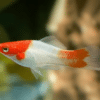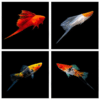To provide the best experiences, we use technologies like cookies to store and/or access device information. Consenting to these technologies will allow us to process data such as browsing behaviour or unique IDs on this site. Not consenting or withdrawing consent, may adversely affect certain features and functions.
The technical storage or access is strictly necessary for the legitimate purpose of enabling the use of a specific service explicitly requested by the subscriber or user, or for the sole purpose of carrying out the transmission of a communication over an electronic communications network.
The technical storage or access is necessary for the legitimate purpose of storing preferences that are not requested by the subscriber or user.
The technical storage or access that is used exclusively for statistical purposes.
The technical storage or access that is used exclusively for anonymous statistical purposes. Without a subpoena, voluntary compliance on the part of your Internet Service Provider, or additional records from a third party, information stored or retrieved for this purpose alone cannot usually be used to identify you.
The technical storage or access is required to create user profiles to send advertising, or to track the user on a website or across several websites for similar marketing purposes.


















Emily Carter (verified owner) –
I recently added 4 Sunset Swordtails to my 55-gallon aquarium, and I cannot express how delighted I am! They arrived just a week ago, shipped quickly and in perfect health. These little livebearers are such a joy to watch as they swim around, showing off their vibrant orange and yellow colors. Their peaceful nature makes them a fantastic addition alongside my guppies and platies, creating a lively, colorful community tank.
I love how active they are, often chasing one another and displaying their beautiful fins. After two months of keeping them, I’ve noticed they’re quite hardy and adapt well to different water conditions, which is a significant plus for someone like me who wants to ensure fish welfare.
The only minor concern was that they can be a bit shy initially, so I recommend adding some plants or decorations for hiding spots to make them feel secure. This really helped my new swordtails flourish!
Overall, I highly recommend these fish for both beginners and experienced aquarists. They bring so much life to my tank, and I wouldn’t hesitate to buy them again!
Emily Carter (verified owner) –
I recently purchased 4 Sunset Swordtails and I couldn’t be happier! After about two months of having them in my aquarium, they’ve brought a burst of color and life to my setup. These peaceful freshwater fish are perfect for beginners like me, as they adjust easily and have shown no signs of stress. Their vibrant orange and red hues really light up the tank, especially against a planted background.
I’ve kept various types of aquarium fish before, but the swordtails have a charm that’s truly special. They swim gracefully and interact with each other, adding a dynamic element to my aquarium. Compared to my previous experience with mollies, these swordtails seem more active and engaging, which makes watching them a joy.
I appreciate the care taken to ensure they arrived healthy and lively. They acclimated without any issues, and I’ve noticed they’ve been breeding, which is a fun bonus! My only minor concern is that they can be a bit nippy during feeding time, so I recommend ensuring they have ample space to avoid any squabbles. Overall, I highly recommend these beautiful livebearers for anyone looking to enhance their freshwater aquarium with vibrant, lively fish. They truly enrich my aquatic world!